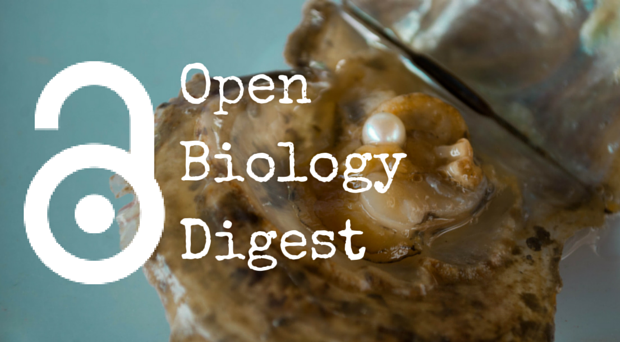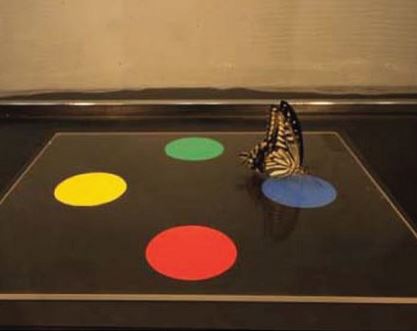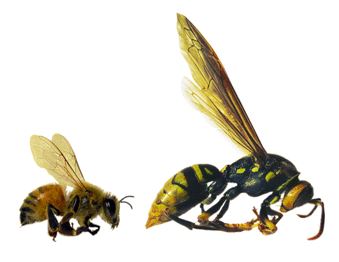
A pearl with a twirl
The only gem produced by a living organism, pearls can be made naturally, or cultured by introducing a nucleus into an animal, usually a pearl oyster, and biomineral is then secreted around it.
Observations suggest the possibility of rotation in order to create a pearl; however no experimental demonstration of such a behavior has been recorded.

To try and overcome this, researchers inserted a magnetic nucleus into the pearl oyster, and used a magnetometer system to register the variations in the magnetic field.
They found that there is indeed a rotation and that this was continuous, starting after a minimum of 40 days. This reveals the secrets behind nature’s ability to create such an extraordinary and complex structure.
Gueguen et al., Royal Society Open Science
What’s a swallowtail butterfly’s favorite color?

An innate color preference (simply meaning the first color of choice) has been reported in many flower-visiting insects. Although many prefer blue, such as honeybees, bumblebees and hawkmoths, some butterflies appear to prefer yellow or red.
Previous research has found that male swallowtail butterflies prefer the color blue, whereas the females prefer yellow or red. However, it’s thought that this decision also depends on scent.
The interaction between color choice and scent has been extensively studied in hawkmoths and honeybees, and now this research has focused on the swallowtail butterfly. With the aim of finding out why this species of butterfly’s color choice is sexually dimorphic, they tested it’s preference in the lab where light and chemical conditions were carefully controlled.
The results show that actually, both sexes innate color preference is blue, however, differences in the effects of plant scents creates the sexual dimorphism between the sexes.
Yoshida et al., Biology Letters
Sex differences in avoidance learning
Avoidance behavior is the process of learning how to respond to upcoming aversive events. Male and female animal’s process safety signals differently, which helps to explain, for example, why women are more likely to be diagnosed with an anxiety disorder than men.
Radell and colleagues aimed to stimulate sex differences in avoidance behavior of rats. Using an existing model they found that females are more likely to experience extinction of the avoidance behavior following a safety period after the aversive event. The results depended on the duration of the aversive signal, how often it occurred during this period and the duration of the safe period.
They also explored the mechanisms behind this – looking at whether safety signals are used to determine the response to aversive events.
It’s all in the sting

We’ve all experienced that moment of enjoying a nice barbeque outside in the summer sun, and suddenly you hear the dreaded buzzing noise of something coming to investigate your food, willing to sting you in the process of getting to it.
But how would a sting differ between a wasp and a bee? This research compares the similarities and differences in structure, properties and functions of the honey bee and paper wasp stings.
Zhao and colleagues performed penetration-extraction tests in order to observe the sting behavior whilst penetrating different materials. Slow motion video recording allowed for a detailed analysis of this process and results suggest distinctly different but highly efficient penetration techniques.
The result of millions of years of evolution through natural selection and the ideas behind it could be used to inspire the design of microneedles.
Experimental bias in life sciences
Experimenter effects, such as observer bias, transpire when a researcher’s expectations influence the outcome of their study. Such biases occur if the researcher is expecting a certain result or if they have an incentive to record data that confirms a certain prediction.
The negative effects of such bias can be avoided by working ‘blind’, meaning that the experimenter is unaware of the identity or treatment group while they are conducting the research.
Holman et al. find that blind protocols are not common in the life sciences. They also report that nonblind studies tend to suggest a greater effect and more significant results. Here, Homan and colleagues discuss potential methods that could be used to minimize bias.
An example of how to improve this situation would be to urge researchers to consider it when conduction their work, or for editors and peer reviewers to keep blind protocols at the back of their mind.
Sophie Marchant
Latest posts by Sophie Marchant (see all)
- Happy Easter! Enjoy the sound (and taste) of your chocolate! - 23rd March 2016
- Quiz: Aiming to make rare diseases common knowledge - 29th February 2016
- Quiz: The big end of year On Biology bumper quiz - 23rd December 2015
Comments